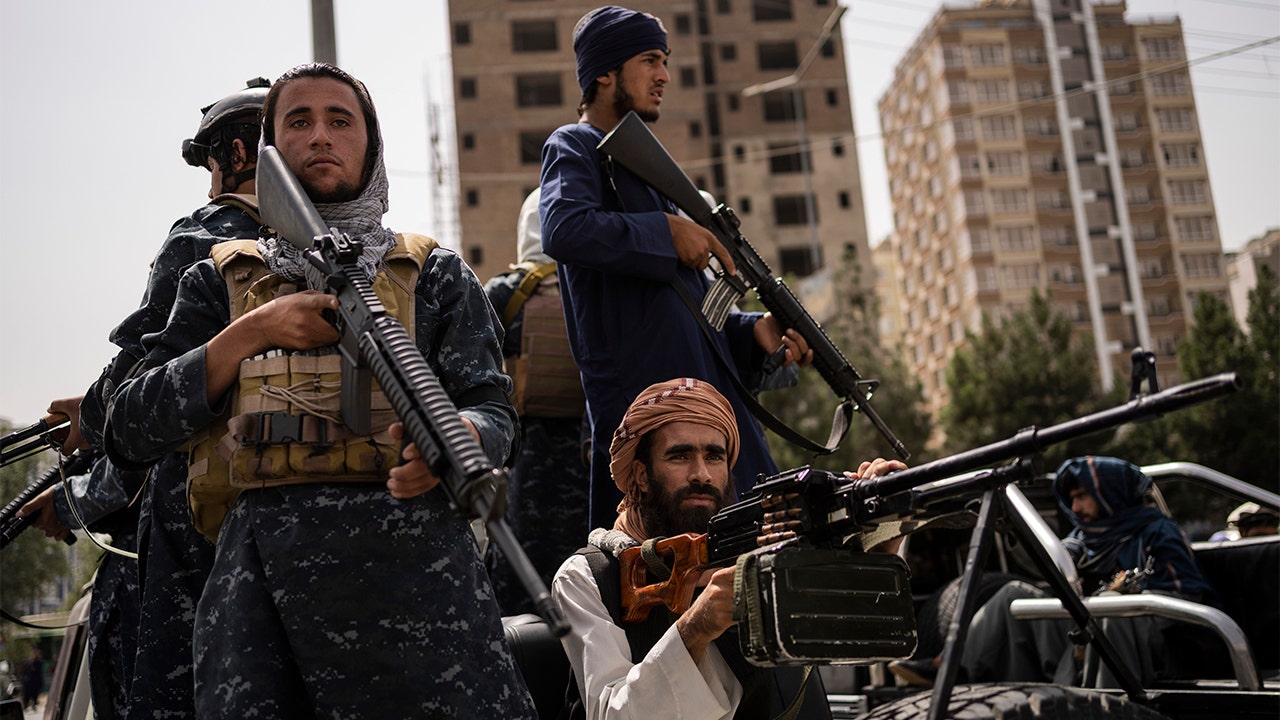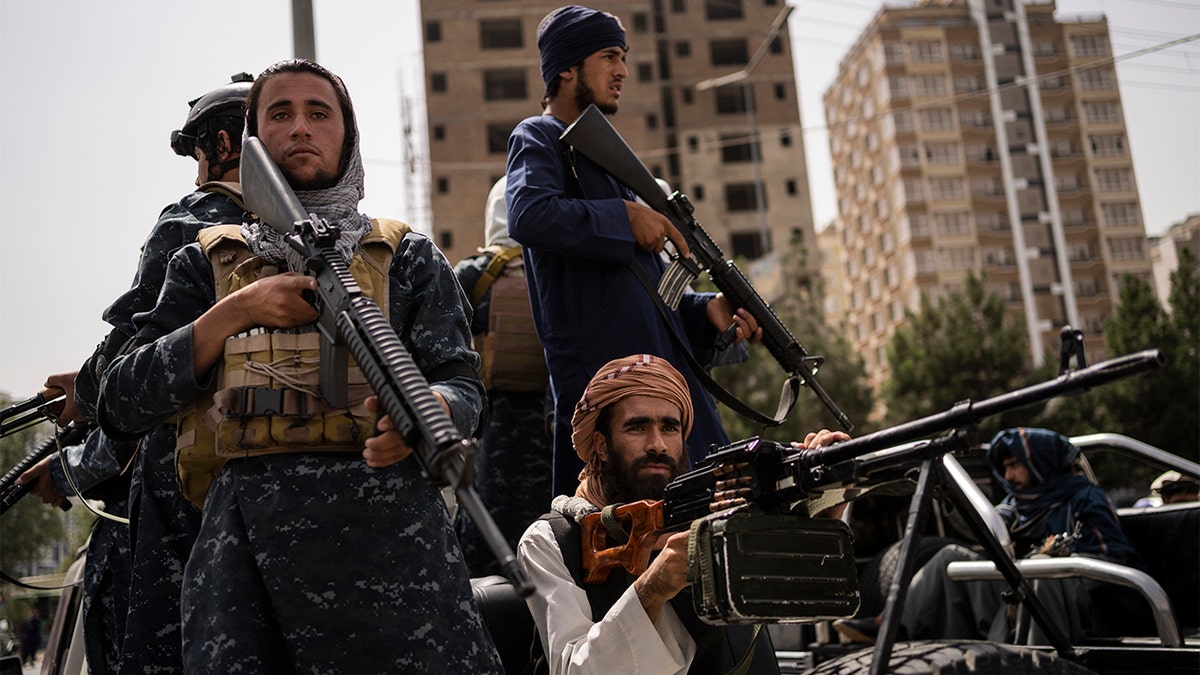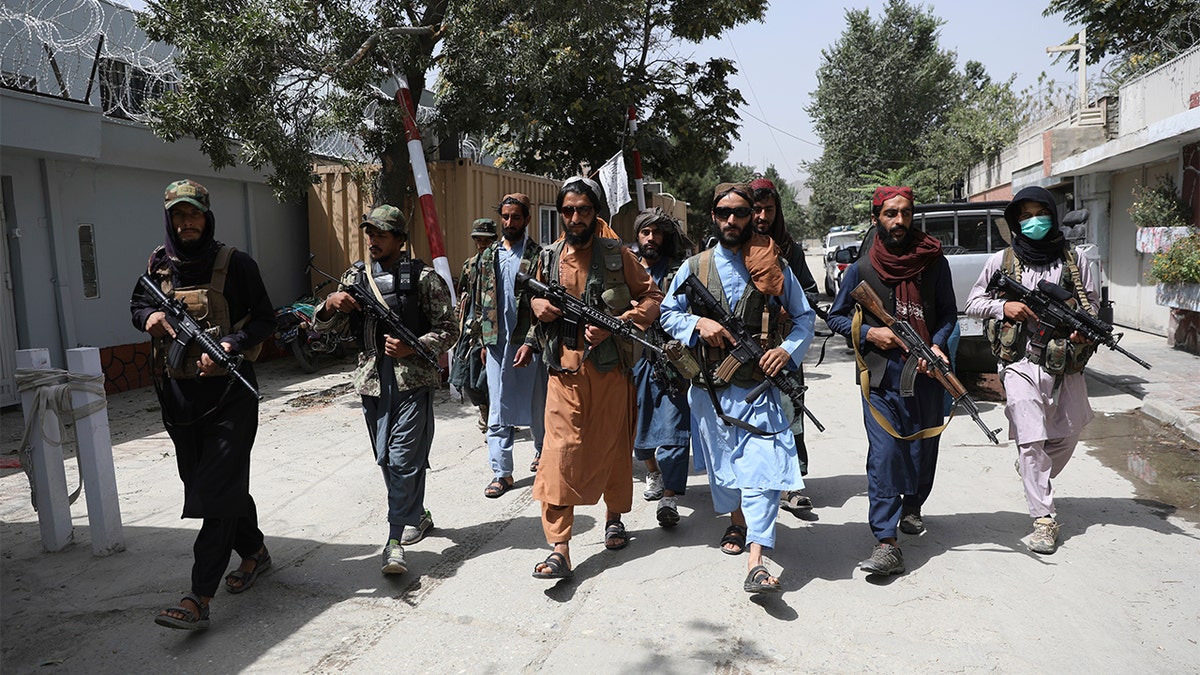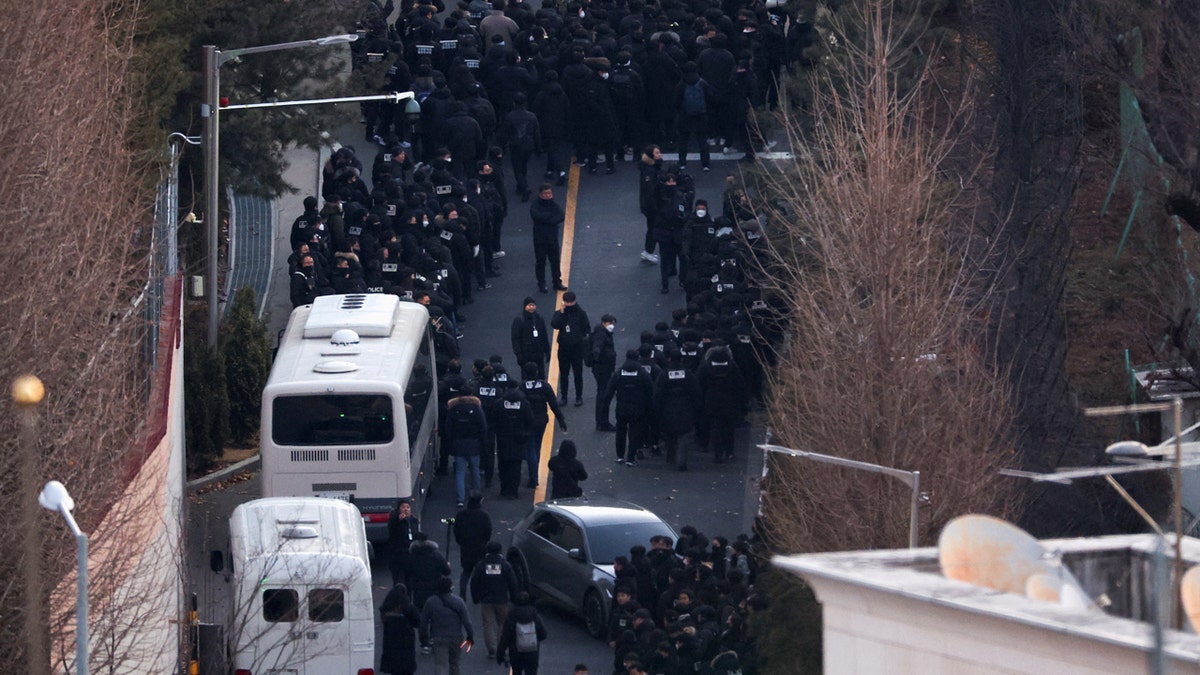World
How the US used AI to take on the Taliban amid drawdown

Many have questioned the lessons learned from the 20-year war in Afghanistan following the chaotic withdrawal and subsequent Taliban takeover, but one major accomplishment from the U.S.’s time fighting the Taliban has emerged – the use of Artificial Intelligence to track terrorist attacks.
In 2019, U.S. and coalition forces began drawing down their troop presence across the country, which left remaining forces strapped when it came to their ability to maintain human intelligence networks used to monitor Taliban movements.
By the end of 2019, the number of Taliban attacks levied at U.S. and coalition forces spiked to levels not seen since the decade prior, prompting security forces in Afghanistan to develop an AI program known as “Raven Sentry.”
AIR FORCE CREATES FLEET OF AI-DRIVEN DRONES TO PROTECT HUMAN PILOTS
Members of Taliban sit on a military vehicle during a Taliban military parade in Kabul, Afghanistan, in November 2021. (Reuters/Ali Khara)
In a report released earlier this year, U.S. Amy Colonel Thomas Spahr, chair of the Department of Military Strategy, Planning, and Operations at the U.S. Army War College, quoted A.J.P. Taylor and said, “War has always been the mother of invention.” Spahr pointed to the development of tanks during World War I, the atomic weapon in World War II and the use of AI to track Open-Source Intelligence as the U.S.’s longest lasting war began to wind down.
Raven Sentry looked to take the load off human analysts by sorting through vast amounts of data that drew from “weather patterns, calendar events, increased activity around mosques or madrassas, and activity around historic staging areas.”
Despite some initial challenges when the technology was first developed, a team of intelligence officers pulled together to form a group dubbed the “nerd locker” to develop a system that could “reliably predict” a terrorist attack.
“By 2019, the digital ecosystem’s infrastructure had progressed, and advances in sensors and prototype AI tools could detect and rapidly organize these dispersed indicators of insurgent attacks,” Spahr, who was also involved with the program, first reported The Economist.

Taliban fighters escort women march in support of the Taliban government outside Kabul University, Afghanistan. (AP Photo/Bernat Armangue)
NEW REPORT RATES US TOP FOR AI READINESS WHILE CHINA, RUSSIA AND IRAN LAG
Though the AI program was cut short by the withdrawal on Aug. 30, 2021, its success was attributed to a “culture” of tolerance for early failures and technological expertise.
Spahr said the team developing Raven Sentry “was aware of senior military and political leaders’ concerns about proper oversight and the relationship between humans and algorithms in combat systems.”
He also pointed out that AI testing is “doomed” if leadership does not tolerate experimentation when programs are developing.
By October 2020, less than a year before the withdrawal, Raven Sentry had reached a 70% accuracy threshold in predicting when and where an attack would likely occur – technology that has proven critical in major wars today, both in the Middle East and Ukraine.

Taliban soldiers stand guard in Panjshir province in the northeast Afghanistan, Wednesday, Sept. 8, 2021. (AP Photo/Mohammad Asif Khan)
“Advances in generative AI and large language models are increasing AI capabilities, and the ongoing wars in Ukraine and the Middle East demonstrate new advances,” the U.S. Army colonel wrote.
Spahr also said that if the U.S. and its allies want to keep its AI technology competitive, it must “balance the tension between computer speed and human intuition” by educating leaders who remain skeptical of the ever-emerging technology.

Taliban fighters patrol in the Wazir Akbar Khan neighborhood in the city of Kabul, Afghanistan, Wednesday, Aug. 18, 2021. (AP Photo/Rahmat Gul)
Despite the success the AI program saw in Afghanistan, the Army colonel warned that “war is ultimately human, and the adversary will adapt to the most advanced technology, often with simple, common-sense solutions.”
“Just as Iraqi insurgents learned that burning tires in the streets degraded US aircraft optics or as Vietnamese guerrillas dug tunnels to avoid overhead observation, America’s adversaries will learn to trick AI systems and corrupt data inputs,” he added. “The Taliban, after all, prevailed against the United States and NATO’s advanced technology in Afghanistan.”

World
Wednesday Briefing

Israel and Hamas on the ‘brink’ of a truce
Israel and Hamas are close to a deal on a cease-fire in Gaza and the release of hostages there, Antony Blinken, the U.S. secretary of state, said yesterday. “It’s closer than it’s ever been before,” he said. “But right now as we sit here we await final word from Hamas on its acceptance. And until we get that word, we’ll remain on the brink.”
Negotiators said Hamas seemed ready to accept the deal, including its details about the exchange of Palestinian prisoners for hostages and the specific movements of Israeli troops as they withdraw from positions in Gaza, a person familiar with the talks said last night.
The person said Israel was also locked in on the agreement, and that both sides seemed prepared to announce their acceptance of it in the very near future. Neither Israeli nor Hamas officials have publicly confirmed their positions. Here’s what we know about the proposal.
Gaza: An analysis in The Lancet found that Palestinian deaths from bombs and other traumatic injuries may have been undercounted by 40 percent during the first nine months of the war.
South Korea’s president was detained for questioning
Yoon Suk Yeol today became the first sitting South Korean president to be detained for questioning by criminal investigators, after striking a deal with law enforcement officials that ended a weekslong standoff. He has been accused of insurrection in connection with his short-lived declaration of martial law last month.
In a video message, Yoon said he had agreed to submit to questioning to prevent a “bloody” clash between his bodyguards and the police. But he called the investigation and the warrant to detain him illegal. Here’s what to know about South Korea’s leadership crisis.
Investigators have 48 hours to question Yoon, after which they could apply for a separate warrant to formally arrest him. Separately, the Constitutional Court is deliberating whether the National Assembly’s Dec. 14 impeachment of Yoon was legitimate and whether the president, currently suspended, should be permanently removed from office.
Republicans embraced Hegseth’s bid to lead the Pentagon
Pete Hegseth, Donald Trump’s pick for defense secretary, emerged from a tense confirmation hearing yesterday with the Republican Party’s support intact. A Senate vote on whether he should lead the Pentagon — a department with three million employees and a budget of $849 billion — could come as soon as Monday.
Over hours of questioning, Democrats quizzed Hegseth about sexual misconduct allegations — Hegseth was accused of rape in 2017 — and his drinking habits. They called him unfit to lead the Pentagon and grilled Hegseth, a former Fox News host, on his long history of disparaging comments about women in the military.
What’s next: It was unclear whether Hegseth had left the hearing with the votes he needed. If all Senate Democrats oppose him, Hegseth will have to secure the backing of at least 50 of the 53 Republicans in the chamber.
Related: A report was released yesterday that detailed the special counsel’s investigation into Trump’s attempt to overturn the 2020 election. Here are four takeaways.
MORE TOP NEWS
The Maha Kumbh Mela festival in India begins this week. It is expected to draw up to 400 million Hindu pilgrims to the banks of the Ganges and Yamuna rivers, in what would be the world’s largest gathering.
The ceremony happens every 12 years and centers on a series of holy baths. But it has also become an important political event. For Prime Minister Narendra Modi, it is a chance to promote his right-wing party.
The 24-hour diner
All-night diners are a signature New York institution. But in a city that supposedly never sleeps, they’re disappearing as costs rise and habits change.
Priya Krishna, a reporter for The Times, spent a Friday night at Kellogg’s Diner in Williamsburg, Brooklyn, dining nonstop from 8 p.m. to 8 a.m. “Surprisingly, I drew no scrutiny from the staff for my hourslong stay,” she writes, “a heartening reminder that no other place will welcome you as unconditionally as an all-night diner.”
Read about Priya’s night of pecan pie, lost treasures and Michael Jackson’s “Thriller.”
World
South Korean president Yoon Suk Yeol arrested: report

Suspended South Korean President Yoon Suk Yeol has reportedly been arrested over insurrection charges stemming from his ill-fated martial law declaration last month.
Yoon’s detention was reported Wednesday by Yonhap, one of the country’s largest news outlets. A warrant for his arrest, initially requested after he failed to show up for questioning, has been out since Dec. 31.
Police dispatched some 3,200 officers to the president’s sprawling hillside estate in Seoul, according to Reuters, where he has spent weeks in hiding whilst surrounded by a personal security detail.
Video shows officers closing in on Yoon’s residence, according to Reuters, where hundreds of his supporters had already gathered to protest on his behalf. Earlier, they were reportedly seen pushing through a group of them.
SOUTH KOREA’S IMPEACHED PRESIDENT AVOIDS ARREST ATTEMPT AFTER HOURSLONG STANDOFF
A previous attempt to detain Yoon was called off on Jan. 3 following a six-hour standoff between military guards and the president’s security staff.
“As I have repeatedly emphasized the need for prevention of physical conflict between state agencies,” Acting President Choi Sang-mok said in a statement Wednesday. “I will sternly hold those responsible if unfortunate events occur.”
Authorities are making a second attempt to detain suspended South Korean President Yoon Suk Yeol following last month’s martial law declaration. (South Korea Presidential Office via AP, File)
Executing a warrant for Yoon’s arrest has proven difficult for investigators, as the president’s legal counsel insists it is impossible to do so under a law barring non-consensual searches of locations potentially linked to military secrets.
Yoon’s lawyers have also decried such a warrant as an illegal means of publicly humiliating him.
ARREST WARRANT ISSUED FOR IMPEACHED SOUTH KOREAN PRESIDENT AS POLITICAL CRISIS DEEPENS
The arrest warrant is the first ever to be levied against a sitting South Korean president. Yoon’s warrant stems from his declaration of martial law on Dec. 3 out of apparent frustration with the opposition-dominated parliament’s refusal to pass key items on his political agenda.
The move was decried within South Korea and abroad, where analysts expressed shock at the sudden and unprecedented move in what is typically one of Asia’s most stable democracies.

Police officers are seen closing in on suspended President Yoon Suk Yeol’s residence in Seoul, South Korea, alongside investigators of the Corruption Investigation Office for High-ranking Officials. (REUTERS/Kim Hong-Ji)
Parliament unanimously rejected Yoon’s declaration, and subsequently suspended him on Dec. 14 in a 204-85 vote that included members of his own party.
Yoon will be formally impeached should the Constitutional Court uphold the motion with a three-fourths majority.
The court’s next hearing is scheduled for Thursday.
Reuters contributed to this report.
World
Looking for a job in IT? These countries are desperate for new hires

Over two-thirds of large companies struggle to fill their IT roles. What are the highest-paid jobs? Which countries are most in need?
As the IT sector continues to grow, thousands of European companies are having trouble filling the many positions available.
According to 2024 Eurostat data, 57.5% of EU businesses can’t recruit all the necessary ICT specialists.
The gap between labour demand and actual employment has grown by 20% in the past ten years.
Large businesses are facing the biggest challenges.
Sixty-eight per cent of them are unable to fill all their ICT specialist positions, followed by medium (59.2%) and small-sized enterprises (53.4%).
Germany, the Czech Republic, Malta, Austria, and Luxembourg are the countries most in need of ICT specialists, with at least 65% of businesses facing shortages.
The percentages are even higher for large enterprises: 84% in Malta, 80% in Germany, 79% in the Czech Republic, 78% in Slovenia, 76% in Austria, 75% in Luxembourg, 73% in Latvia, 72% in Hungary and 71% in Croatia.
Spain, Poland, and Bulgaria have the least hiring problems, although at least 30% of companies in these countries still face ICT shortages.
What are the highest-paid IT positions?
The main difficulties in recruitment, according to Eurostat, are a lack of applications, insufficient qualifications and experience, and high salary expectations.
Salaries in the ICT sector have consistently outpaced average wages in Europe in the last decade, according to the 2024 OECD Digital Economy Outlook. In the EU, in particular, annual wages grew by 0.24% compared to 0.20% in the rest of the economy.
Recruitment specialists Robert Walters have listed the top-paid ICT jobs in countries including Germany, which seems to be struggling the most in the EU to recruit specialists.
The highest-paid role is Chief Information Technology Officer, with an annual base of €150k for employees with at least three years of experience, to €180k for those with at least eight years.
The consultancy role in the highest bracket is the SAP/ERP one, with a base of €100k. (SAP ERP is an enterprise resource planning software.)
Data engineer and data scientist positions are both in the €100-120k bracket.
Video editor • Mert Can Yilmaz
-

 Health1 week ago
Health1 week agoOzempic ‘microdosing’ is the new weight-loss trend: Should you try it?
-
/cdn.vox-cdn.com/uploads/chorus_asset/file/25822586/STK169_ZUCKERBERG_MAGA_STKS491_CVIRGINIA_A.jpg)
/cdn.vox-cdn.com/uploads/chorus_asset/file/25822586/STK169_ZUCKERBERG_MAGA_STKS491_CVIRGINIA_A.jpg) Technology6 days ago
Technology6 days agoMeta is highlighting a splintering global approach to online speech
-

 Science3 days ago
Science3 days agoMetro will offer free rides in L.A. through Sunday due to fires
-
/cdn.vox-cdn.com/uploads/chorus_asset/file/25821992/videoframe_720397.png)
/cdn.vox-cdn.com/uploads/chorus_asset/file/25821992/videoframe_720397.png) Technology1 week ago
Technology1 week agoLas Vegas police release ChatGPT logs from the suspect in the Cybertruck explosion
-

 Movie Reviews1 week ago
Movie Reviews1 week ago‘How to Make Millions Before Grandma Dies’ Review: Thai Oscar Entry Is a Disarmingly Sentimental Tear-Jerker
-

 Health1 week ago
Health1 week agoMichael J. Fox honored with Presidential Medal of Freedom for Parkinson’s research efforts
-

 Movie Reviews1 week ago
Movie Reviews1 week agoMovie Review: Millennials try to buy-in or opt-out of the “American Meltdown”
-

 News1 week ago
News1 week agoPhotos: Pacific Palisades Wildfire Engulfs Homes in an L.A. Neighborhood













